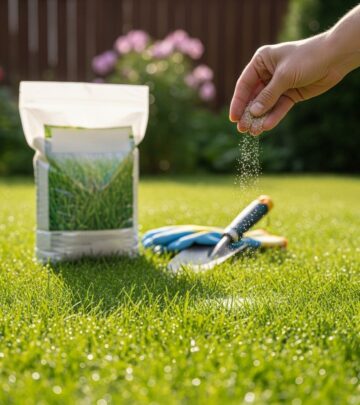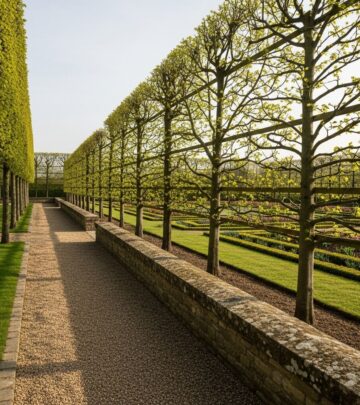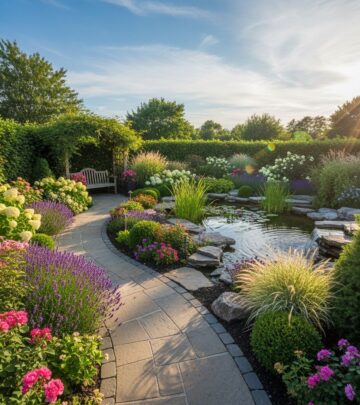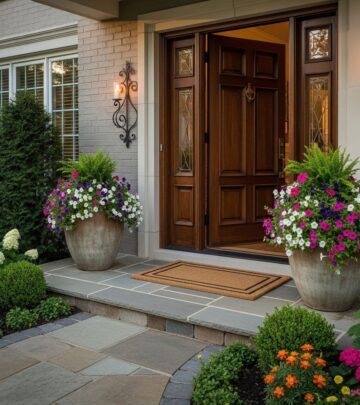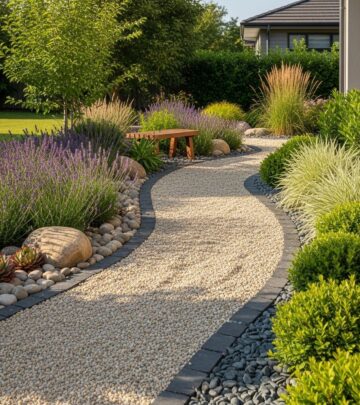Ribbon Driveways: Design, Materials & Installation Guide
Discover the aesthetic, practical, and eco-friendly benefits of ribbon driveways, from materials and installation tips to maintenance and design inspiration.
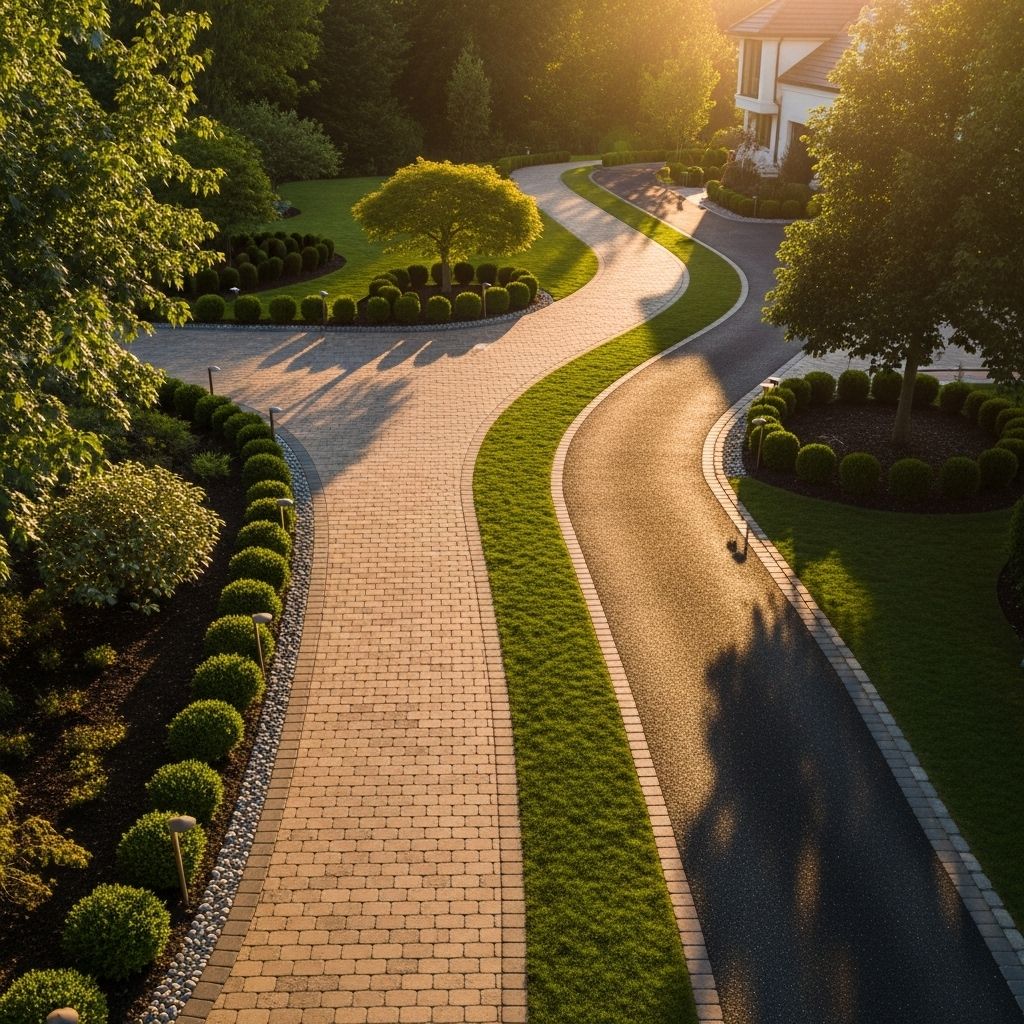
Image: HearthJunction Design Team
Hardscaping 101: The Complete Guide to Ribbon Driveways
Ribbon driveways, sometimes called Hollywood driveways, are making a comeback in modern landscaping for their blend of classic charm and eco-friendly functionality. Featuring two parallel tracks—often made from concrete, brick, or stone—separated by an unpaved strip, ribbon driveways offer homeowners a sustainable, stylish, and practical alternative to fully paved driveways. In this guide, you’ll discover everything you need to know about ribbon driveways, from design inspiration and materials to installation, maintenance, and frequently asked questions.
Table of Contents
- What is a Ribbon Driveway?
- Best Materials for Ribbon Driveways
- Design Inspiration: Classic to Contemporary
- How to Install a Ribbon Driveway
- Maintenance of Ribbon Driveways
- Advantages and Disadvantages
- Frequently Asked Questions (FAQs)
What is a Ribbon Driveway?
A ribbon driveway consists of two hardscape tracks separated by an unpaved center strip. This center strip is often grass, groundcover, gravel, or another permeable surface. Most classic designs use tracks roughly 2 feet wide, with a 3-foot center gap, but these dimensions are adjustable to fit any vehicle or property style.
- The parallel tracks are typically constructed using durable materials—such as concrete, brick, stone, or gravel—for vehicle support.
- The central unpaved strip can be planted with low-maintenance groundcovers, left as grass, or filled with decorative gravel or mulch.
This configuration not only reduces the paved surface area (making it more environmentally friendly) but also allows water to permeate into the ground, helping prevent runoff and reducing the urban heat island effect.
Ribbon driveways are particularly associated with early 20th-century American homes—especially Craftsman and bungalow architecture—but their versatility makes them suitable for both traditional and contemporary landscapes.
Best Materials for Ribbon Driveways
The beauty of ribbon driveways lies in their flexibility. You can choose materials that suit your architectural style, budget, and sustainability goals. Common materials include:
- Concrete: The classic choice, offering durability and a clean, timeless look. Works especially well with Craftsman-style architecture and modern homes.
- Mortar-set brick or stone: Ideal for traditional or historic homes, adding texture and color variation.
- Crushed gravel: Budget-friendly and permeable, a good option for rustic or informal properties. Gravel driveways often use stabilizing grids for enhanced performance.
- Cobblestones or interlocking pavers: These add a contemporary or classic touch, depending on your color and pattern choice.
- Oyster shells: Traditional in coastal regions, they offer excellent drainage and a unique appearance.
For the central strip, options include:
- Grass: The most common and least expensive. Low-maintenance, drought-tolerant varieties work best.
- Groundcovers: Creeping thyme, ajuga, vinca minor, succulents, or herbs for variety and resilience.
- Decorative gravel or mulch: Permeable and virtually maintenance-free.
- Paving grids: Stabilizing grids can be installed under gravel or turf for additional support and erosion prevention.
Design Inspiration: Classic to Contemporary
Ribbon driveways can be adapted to complement any style of home, from historic bungalows to ultra-modern residences. Here are some inspiring approaches:
- Classic Concrete Ribbons: Straight, crisp concrete bands with a grassy middle evoke a traditional American look.
- Brick or Cobblestone Tracks: Add warmth and old-world elegance. Combine with creeping groundcovers for a lush, lived-in vibe.
- Modern Pavers: Large, geometric pavers separated by fine gravel or drought-tolerant plants create a clean, contemporary setting.
- Rustic Gravel: Crushed stone ribbons with wildflower or herb-filled centers are perfect for country driveways and informal gardens.
- Coastal Shells: Oyster shell tracks make a distinctive, permeable surface popular in seaside towns.
For visual interest, consider curving the driveway, planting the center with colorful or textural groundcovers, or edging the bands with brick or steel for a crisp finish.
How to Install a Ribbon Driveway
Professional vs. DIY Installation
| Consideration | DIY Installation | Professional Installation |
|---|---|---|
| Time Investment | 2–4 weekends for an average driveway | Faster, depending on project size |
| Cost Comparison | Material costs only | Adds $1,000–$3,000 to material costs |
| Complexity Factors | Ideal for straight layouts, basic materials | Better for curves, grade changes, premium materials |
Installation Steps
- Choose Layout: Mark the driveway design with stakes and string, ensuring the tracks align with your vehicle’s wheels and property lines.
- Excavate Tracks: Dig out the track areas to a depth of 6–12 inches, depending on your final material.
- Prepare Subbase: Lay a compacted gravel base for drainage and stability. This is crucial for longevity and preventing uneven settling.
- Install Edge Restraints: If using pavers, bricks, or tiles, edge restraints will keep materials from shifting over time.
- Add Driving Surface: Add your chosen track material (concrete, brick, gravel, etc.) and compact as needed.
- Landscaping the Center: Plant grass or groundcover, or fill with gravel, mulch, or decorative stone. Use soil appropriate for your chosen plants.
Tips for Best Performance:
- Proper Grading: Slope the driveway away from your house and structures to ensure drainage and avoid pooling.
- Correct Track Width: Standard wheel tracks are 18–24 inches wide, with a center strip typically 24–36 inches. Adjust based on your vehicle and available space.
- Stabilizing Pavers: Consider using paver grids under gravel or turf for added support and permeability.
Maintenance of Ribbon Driveways
Ribbon driveways are generally low-maintenance, provided they are installed correctly. However, the specific maintenance needed will depend on the materials and landscaping chosen.
- Track Cleaning: Sweep or pressure-wash tracks periodically to remove dirt and debris. Seal concrete or stone every few years to prevent staining and weather damage.
- Gravel Upkeep: Gravel can scatter and may need topping up every couple of years.
- Plant Care: The central strip, if planted, will require mowing, weeding, watering, and potentially reseeding or replanting after harsh winters.
- Snow Removal: Take care when shoveling or plowing to avoid damaging plants in the center strip. Reseed as necessary following severe cold or snow events.
One of the main advantages is their flexibility: ribbon driveways adapt well to freeze-thaw cycles, reducing the risk of cracking compared to fully paved surfaces.
Advantages and Disadvantages
| Advantages | Disadvantages |
|---|---|
|
|
Frequently Asked Questions (FAQs)
Q: Are ribbon driveways eco-friendly?
A: Yes, ribbon driveways minimize impervious surfaces, allowing rainwater to infiltrate and reducing stormwater runoff. This supports local groundwater recharge and lessens the environmental impact of hardscaping.
Q: What are the best low-maintenance plants for the center strip?
A: Drought-tolerant grasses, creeping thyme, ajuga, vinca minor, and some succulents work well. Choose varieties suited to your local climate and soil for best results.
Q: Can ribbon driveways support heavy vehicles?
A: With proper installation, including a well-compacted subbase and reinforced tracks (such as concrete or thick pavers), ribbon driveways can support cars and light trucks. For heavier vehicles, professional consultation is advised.
Q: How does a ribbon driveway impact property value?
A: A ribbon driveway enhances curb appeal, adds unique character, and can boost home value—especially where sustainability and landscaping are valued.
Q: What is the typical lifespan of a ribbon driveway?
A: With good materials and maintenance, a ribbon driveway can last decades, matching or exceeding the longevity of a traditional driveway.
Conclusion
Ribbon driveways encapsulate the best of both worlds: timeless style and modern sustainability. By reducing paved surfaces, supporting responsible drainage, and allowing abundant design creativity, they are a top choice for both classic and contemporary homes seeking curb appeal with a green edge. Whether you opt for sleek concrete, rustic brick, or natural gravel, a ribbon driveway offers adaptability, beauty, and environmental benefits that will grace your property for years to come.
References
- https://www.gardenista.com/posts/hardscaping-101-ribbon-driveways/
- https://www.truegridpaver.com/ribbon-driveway/
- https://www.wolfeboronh.us/sites/g/files/vyhlif8406/f/pages/ribbon_driveways.pdf
- https://alittledelightful.com/ribbon-driveway-ideas-from-classic-to-contemporary/
- https://todayshomeowner.com/driveway/guides/ribbon-driveways/
Read full bio of Shinta






